Does your organisation have a platform automating scheduling and rostering?
Manually calculating work rosters can quickly become a source of immense frustration and stress for any management team. When relying on human judgment alone, the process involves balancing staff availability, experience and budgets – to name just a few. Without specialised software, managers and team leaders often find themselves tangled in a web of spreadsheets and notes, each minor change triggering a cascade of adjustments across the entire schedule and risk, potentially running foul of employment obligations.
The endless back-and-forth communication and the stress of constantly reacting to unexpected changes make manual rostering a burden rather than a productive part of any organisation. Miscalculations or oversights can lead to understaffing, ballooning overtime costs, employee dissatisfaction, and even legal issues. All these problems then compound to consume valuable time and divert attention from strategic priorities.
Scheduling and rostering software enables your team to better handle this aspect of workforce management, transforming a manual burden into a streamlined operation. Here are five reasons to consider adopting scheduling and rostering software.
Optimise workforce costs
Manually handling labour cost distribution and management is time-consuming and can give way to human error. These inefficiencies can lead to incorrect or sub-par allocation of resources and unanticipated expenses, which can negatively impact budgets and significantly impact profitability.
Scheduling and rostering software can help to automate the process of budget management and leverage data-driven insights to achieve greater accuracy and efficiency. By minimising administration time and reducing staffing costs, this technology takes the guesswork out of allocating labour and managing costs. The software provides a base cost for every scheduled shift, and when rostering or making changes to a roster, the cost includes any applicable payment conditions, enabling tight budget control. An assessment of the cost is provided against the budget allocation on a single screen, showing real-time cost comparisons whenever a shift is allocated or modified.
Ensure you meet compliance requirements
Scheduling and rostering software supports you in maintaining compliance with labour laws and regulations and the employment conditions as laid out in Modern Awards and EBAs. When building rosters, your organisation must consider all of these conditions – things like the maximum weekly work hours, break times and rest required between shifts.
If you manage a large workforce with people operating in various roles and over multiple locations and a variety of shift patterns or employment types, then you have to apply different rules to each individual. Manually managing this process increases the likelihood of errors; scheduling and rostering software will automatically apply all employment conditions so that you meet all your employer obligations.
Non-compliance has been well documented in the media – and can tarnish your organisation’s reputation and lead to serious legal consequences. Commitment to legal and ethical conduct and adherence to the employment framework within the Australian business landscape is an investment that builds trust, reputation, and long-term success.
Automate rostering and scheduling processes
Manually coordinating staff availability, balancing shifts, and ensuring compliance with regulations take considerable time. Without automation, these tasks can consume substantial resources and limit your organisation’s ability to adapt to changes quickly.
Scheduling and rostering software saves time by using real-time data on forecasts and staff availability to generate schedules. Such automation significantly reduces manual calculations and allows managers to focus on more valuable tasks. This automation enhances productivity and lets managers respond quickly to unforeseen changes or demands. For example, if someone calls in sick, scheduling and rostering software can suggest the people best suited to allocate to the vacant shift.
Forecast workforce demands
Workforce forecasting enables you to schedule for future business requirements and accommodate last-minute changes. Scheduling and rostering software makes suggestions based on volume requirements, staff rotations, upcoming events or other external factors to help you allocate people effectively, reduce unnecessary costs and prevent over- or under-staffing.
Your organisation can increase responsiveness and agility and be better prepared for future changes in business conditions or handle demand or irregular peaks and troughs. Long-term forecasting can elevate strategic HR planning. Modelling future operating conditions, such as increasing the number of locations, adopting new employment conditions or planning for increased patronage at a point in the future, allows a business to look forward at staffing requirements. Early recognition of shortfalls or overstaffing enables early strategies to address these, and your HR team can implement the necessary strategies in time to accommodate the need.
Boost the employee experience
A good employee experience contributes to your organisation’s success. People with satisfaction and a sense of pride in their role can create a positive work environment, increasing productivity and reducing turnover. So, your workforce management suite needs tools that encourage adoption and make people feel heard, supported and informed.
Scheduling and rostering software contributes to the employee experience by ensuring you acknowledge work preferences and requests when creating rosters. An organisation that fails to consider an individual’s preferences will likely foster dissatisfaction within the workforce. Conversely, honouring these requests and actively considering employee preferences leads to a more satisfied team.
A rostering and scheduling app can also contribute to a good employee experience. An app allows people to view their rosters, log their working preferences, and request time off without sending emails or chasing down a manager. These approaches also make it easier for these requests to get missed, which creates problems later on if someone has to request changes to a roster.
Conclusion
Scheduling and rostering software can reduce workforce management complexities and the time spent on manual tasks, leading to tangible cost savings. Improved forecasting enhances responsiveness and agility, while a focus on compliance ensures alignment with employment obligations. Finally, increased employee satisfaction contributes to a more harmonious and productive work environment.
Scheduling and rostering software is a strategic move for any organisation seeking to streamline operations without overburdening staff or resources. This technology offers a practical and proven approach to addressing common challenges, so it belongs high on your priority list.
Why choose Tambla’s scheduling and rostering software?
Our software enhances your operations by placing the right employees with the right skills at the right place and time. Tambla WFM streamlines the complexities of schedule creation and staff rostering, taking the guesswork out of labour cost allocation and adapting to the ever-changing demands of your business. We designed our tools to facilitate real-time adjustments and simplify the demanding task of workforce management. Visit our Scheduling & Rostering page for more information.
Related blogs
Why place award interpretation software high on your priority list?
The power of user experience in boosting the employee experience




